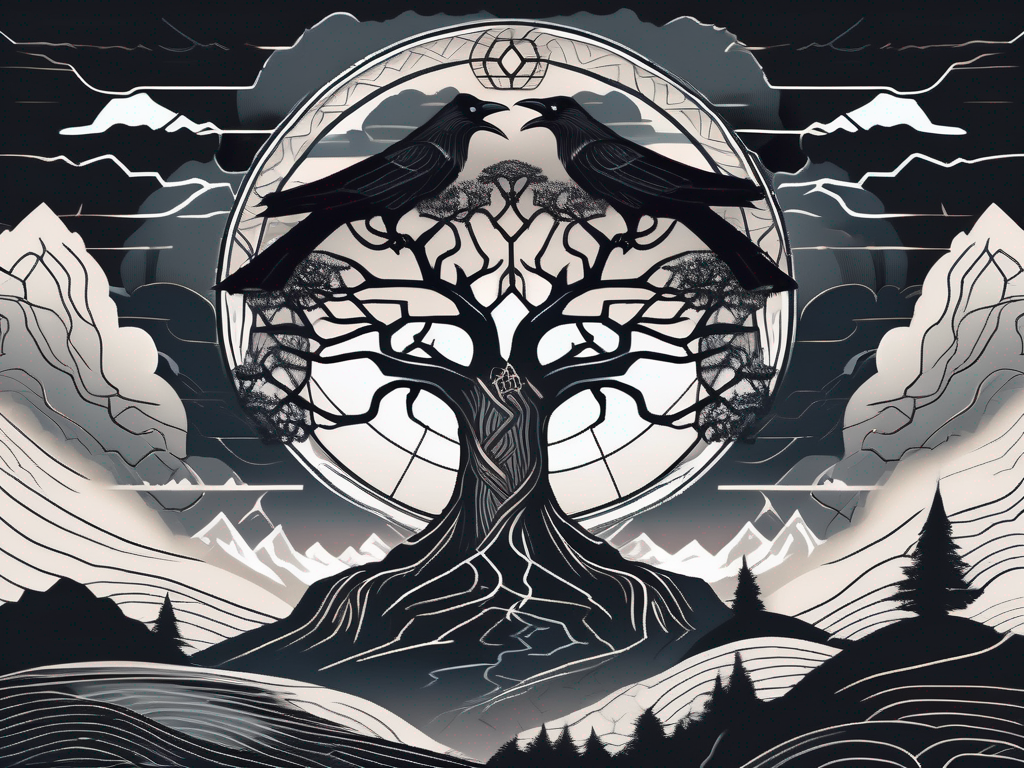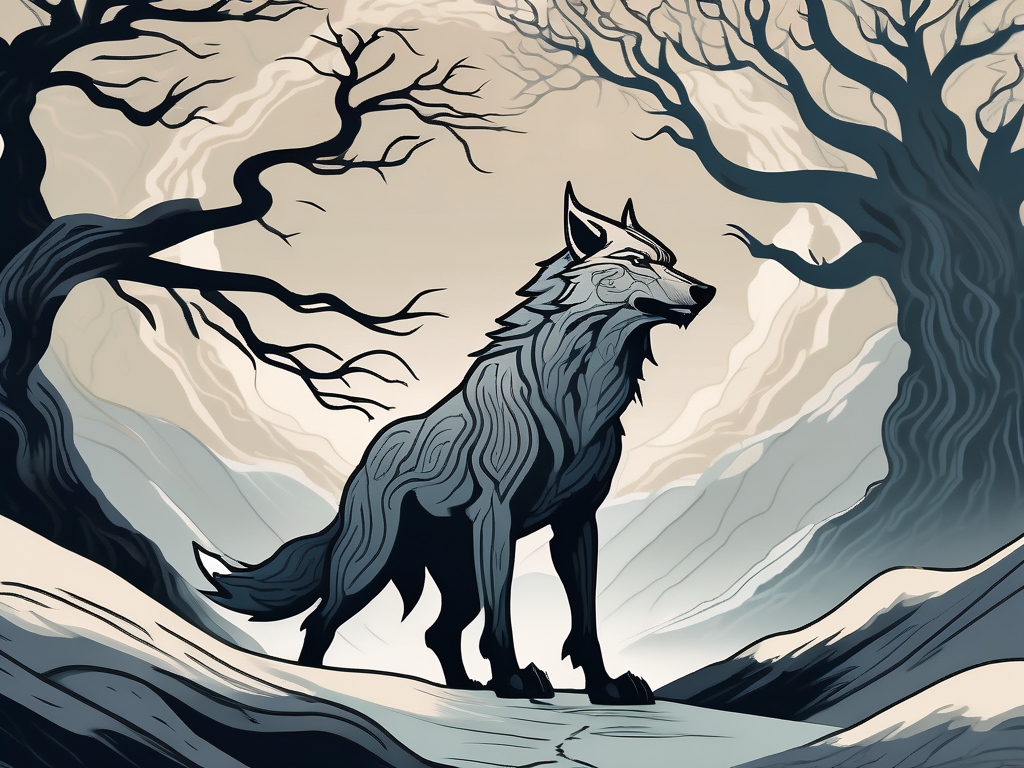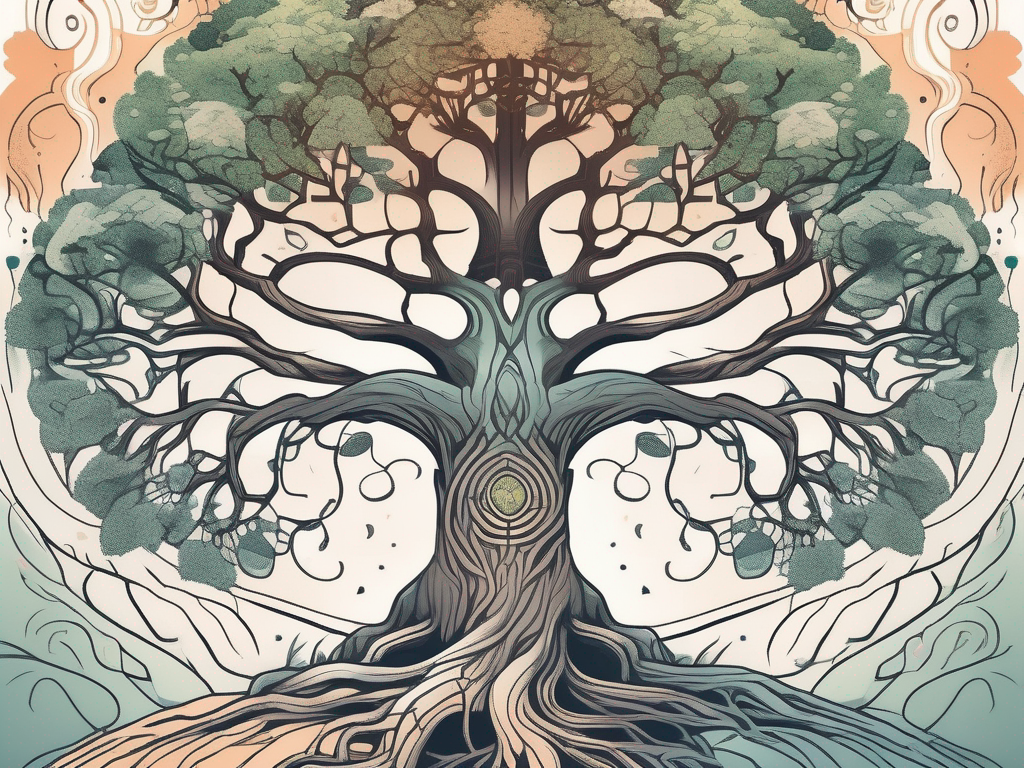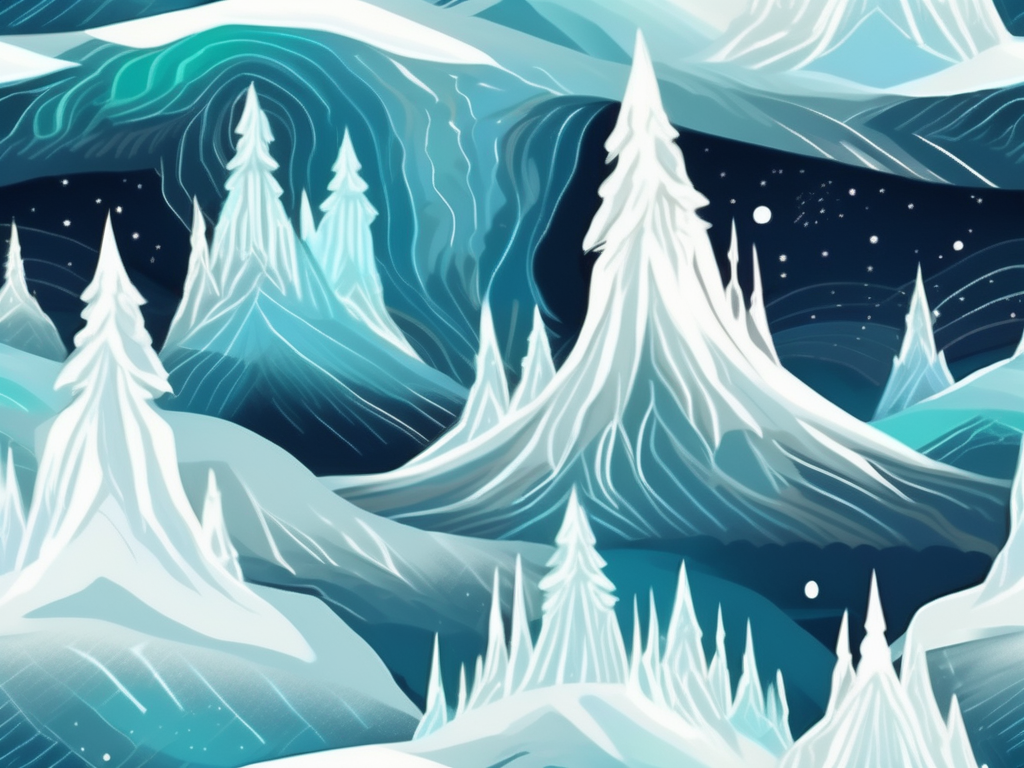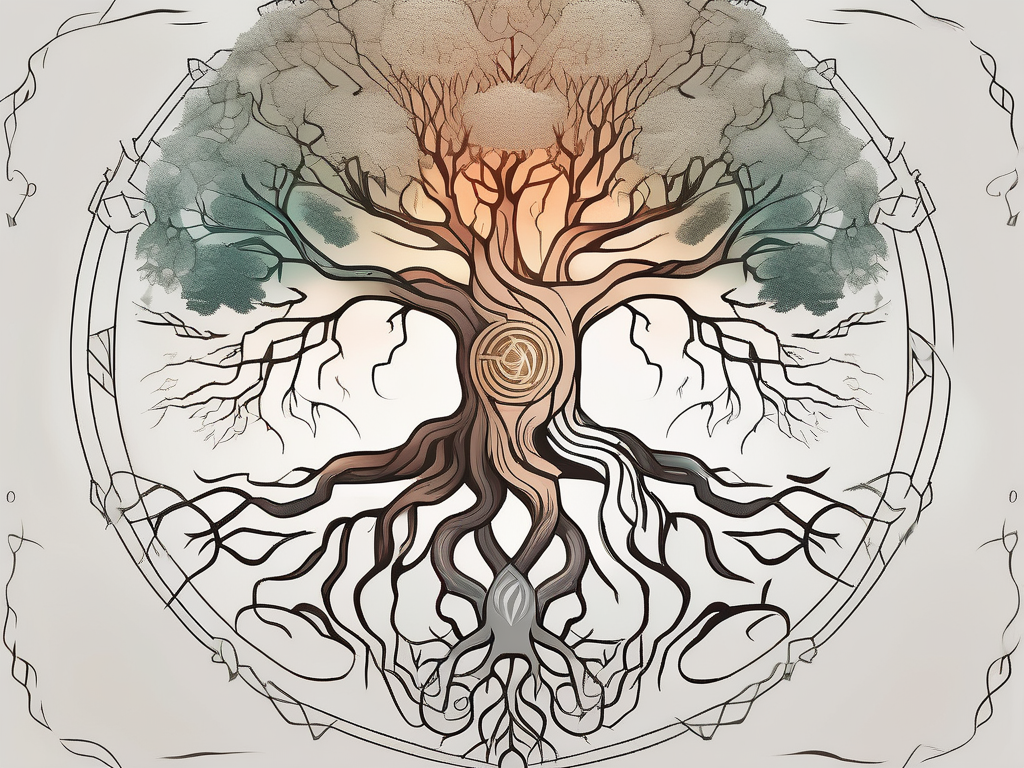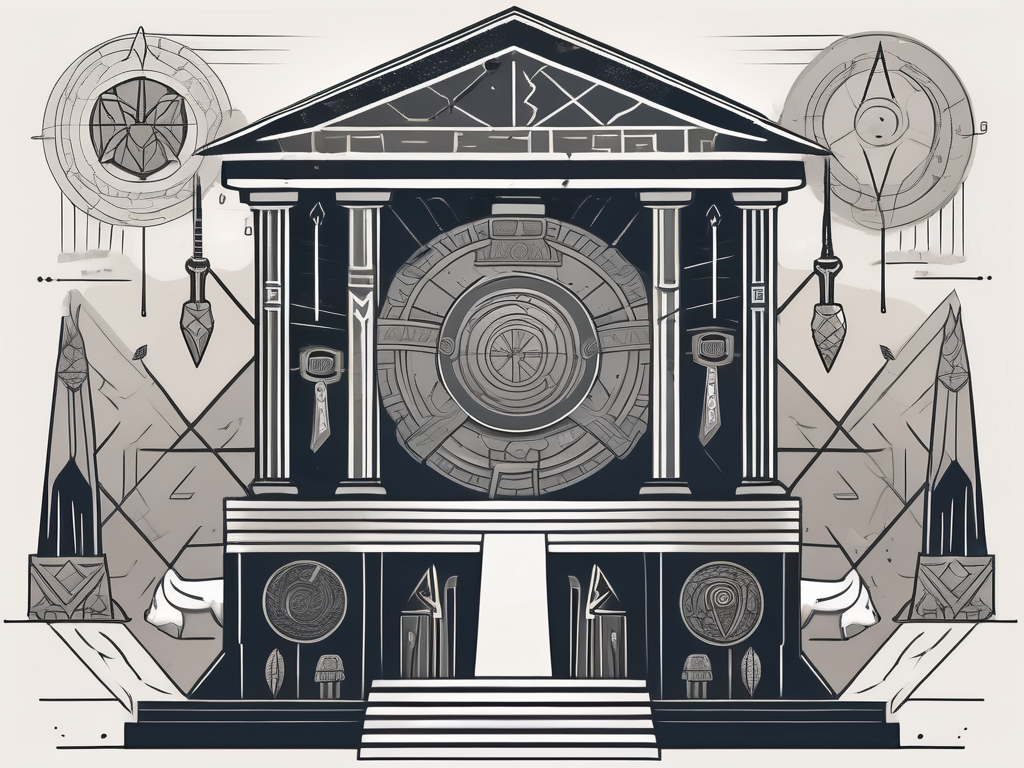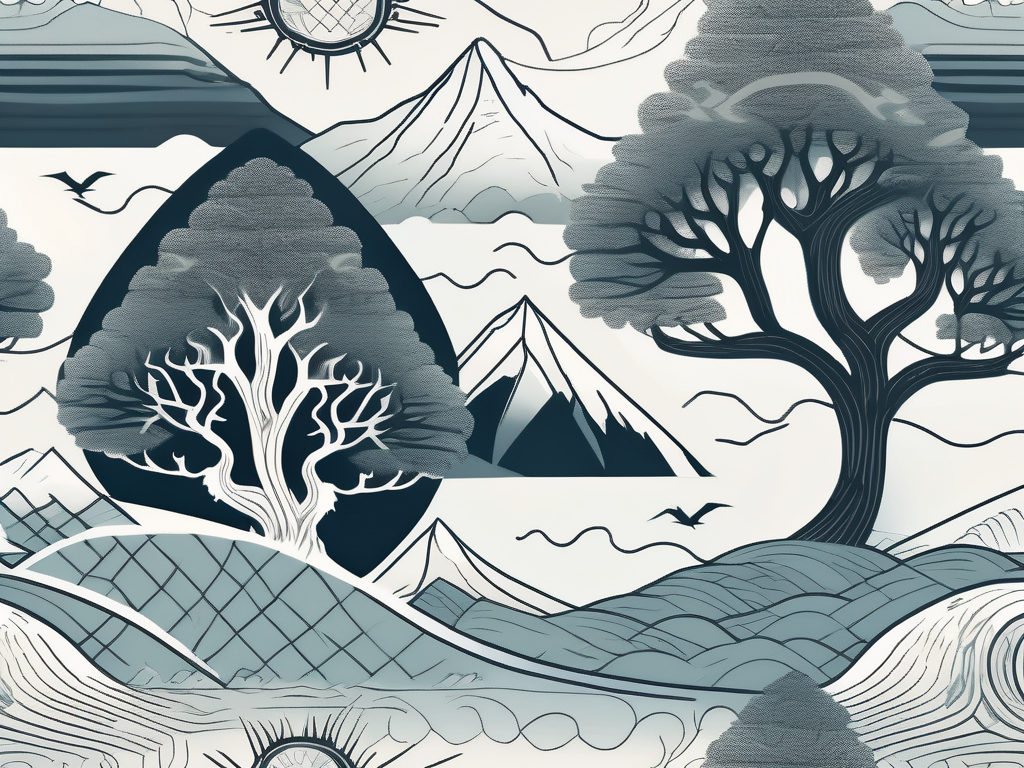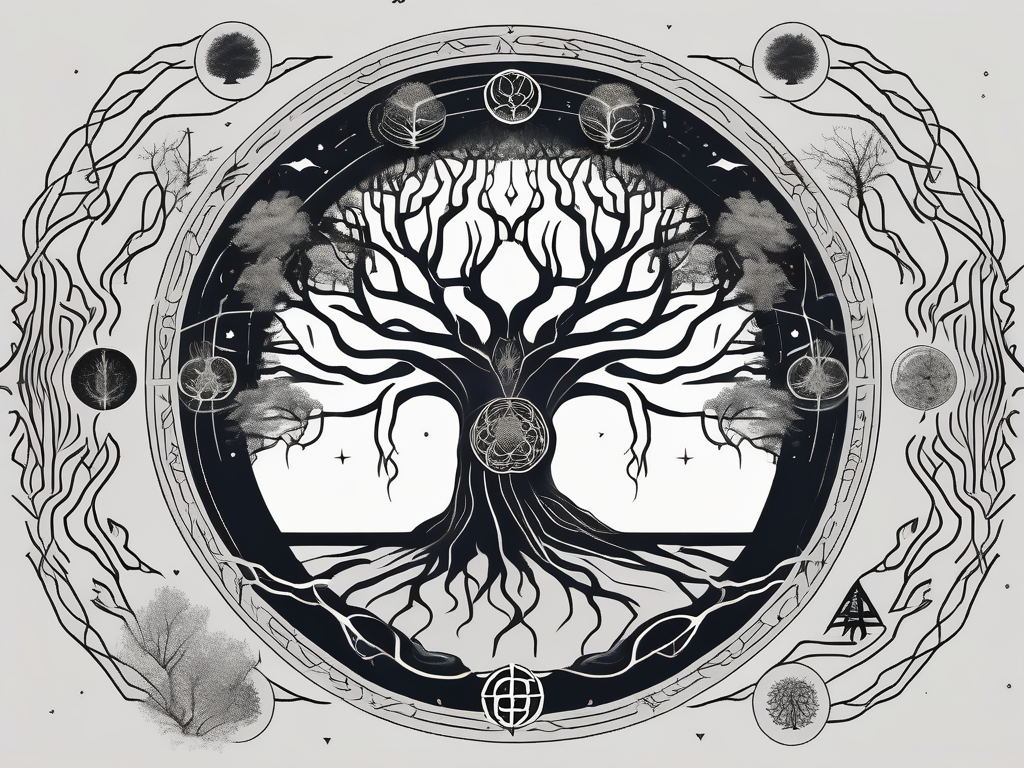Norse mythology is a rich and fascinating subject, filled with gods, giants, and a world teetering on the edge of destruction. At the heart of this ancient belief system lies a dark undercurrent of malevolence. In this article, we will delve deep into the realm of Norse gods and explore their darker aspects.
Understanding Norse Mythology
The Origins and Influence of Norse Mythology
Norse mythology originated from the ancient Scandinavian tribes and was shaped by their environment and culture. The harsh winters and dangerous landscapes influenced their tales of gods battling giants and monsters. The Scandinavians, living in a land of long, dark winters and treacherous terrains, found solace and inspiration in the stories of powerful gods and their epic battles.
These myths and legends were not merely entertainment for the ancient Scandinavians; they were a way to make sense of the world around them. The tales of gods and giants served as cautionary tales, teaching valuable lessons about bravery, honor, and the consequences of one’s actions. They provided a moral compass for the people, guiding them through the challenges of their daily lives.
As the Scandinavian tribes ventured beyond their homeland, Norse mythology spread its influence to other parts of Europe. The Vikings, known for their seafaring skills and exploration, carried these stories with them, sharing them with the people they encountered in their journeys. The tales of gods and heroes captivated the imaginations of those who heard them, leaving a lasting impact on the art, literature, and cultural practices of various European societies.
Even today, the influence of Norse mythology can be seen in popular culture. From blockbuster movies to bestselling books, the themes and characters of Norse mythology continue to captivate audiences around the world. The epic tales of Odin, Thor, and Loki have become household names, and their stories are often reimagined and retold in new and exciting ways.
Key Concepts and Beliefs in Norse Mythology
Central to Norse mythology is the concept of an interwoven cosmic order, where gods, giants, and humans exist in a delicate balance. The ancient Scandinavians believed that the world was held together by a complex web of relationships and interactions between these different beings.
At the center of this cosmic order were the gods, powerful and immortal beings who ruled over the various realms of existence. The gods were not distant and aloof; they were deeply involved in the affairs of humans and giants, often interacting with them directly. This close relationship between gods and mortals was a unique aspect of Norse mythology, distinguishing it from other mythological traditions.
Honor, bravery, and loyalty were highly valued virtues in Norse society, and these values were reflected in the mythology. The gods themselves embodied these virtues, and their actions were often driven by a sense of duty and honor. However, the gods were not perfect; they were capable of both good and evil deeds. This nuanced portrayal of the gods made them relatable to the ancient Scandinavians, who saw in them a reflection of their own strengths and weaknesses.
Another key concept in Norse mythology is the belief in fate and destiny. The ancient Scandinavians believed that the course of their lives was predetermined by the Norns, powerful female beings who controlled the threads of fate. This belief in fate gave the people a sense of purpose and direction, as they saw themselves as players in a grand cosmic drama.
In conclusion, Norse mythology is a rich and complex tradition that originated from the ancient Scandinavian tribes. Shaped by their environment and culture, these myths and legends continue to captivate and inspire people around the world. Through their tales of gods and heroes, the ancient Scandinavians sought to make sense of the world and find meaning in their lives. Today, the influence of Norse mythology can be seen in various aspects of popular culture, reminding us of the enduring power of these ancient stories.
The Pantheon of Norse Gods
The Norse mythology is rich with a diverse pantheon of gods and goddesses, each with their own unique powers, personalities, and realms. Among these deities, two main groups stand out: the Aesir and the Vanir.
The Aesir: The Main Gods of Norse Mythology
The Aesir, the primary gods in Norse mythology, resided in Asgard, the realm of the gods. This majestic realm was known for its grandeur and beauty, with towering palaces and shimmering golden halls. At the helm of the Aesir pantheon was Odin, the allfather god. Odin was revered as the king of the gods, the god of wisdom, and the god of war. His presence commanded respect and awe, and his wisdom was sought by both gods and mortals alike.
Alongside Odin, there were other notable Aesir gods who played significant roles in Norse mythology. One such god was Thor, the mighty thunder god. Known for his immense strength and his ability to wield the powerful Mjolnir, Thor was a symbol of protection and bravery. His thunderous strikes echoed through the realms, striking fear into the hearts of his enemies.
Another prominent Aesir goddess was Freyja, the goddess of love and fertility. With her radiant beauty and enchanting charm, Freyja captivated the hearts of gods and mortals alike. She was associated with love, beauty, and sensuality, and her presence brought joy and abundance to those who worshipped her.
The Vanir: The Secondary Gods of Norse Mythology
The Vanir gods, on the other hand, were a group of gods associated with fertility, nature, and magic. Initially, they were considered rivals to the Aesir pantheon, but eventually, a truce was made, and the two pantheons merged. The Vanir gods brought their unique powers and perspectives to the unified pantheon, enriching the Norse mythology even further.
One of the prominent members of the Vanir was Njord, the god of the sea and winds. Njord’s domain was the vast ocean, where he commanded the tides and controlled the winds. Sailors and fishermen would often seek his favor, praying for calm seas and favorable winds for their journeys. Njord’s presence brought a sense of tranquility and harmony to the seas.
Another notable Vanir god was Freyr, the god of prosperity and abundance. Freyr was associated with fertility, agriculture, and the bounties of nature. His presence brought forth abundant harvests, ensuring the prosperity and well-being of the Norse people. Farmers and those who relied on the land for sustenance would offer prayers and sacrifices to Freyr, seeking his blessings for a fruitful harvest.
As the Norse mythology unfolds, the intricate relationships and stories of these gods and goddesses continue to captivate and inspire. Their tales of valor, love, and wisdom have left an indelible mark on the rich tapestry of Norse culture and continue to be celebrated and revered to this day.
The Dark Side of Norse Gods
Loki: The Trickster God
No exploration of malevolence in Norse mythology would be complete without examining Loki, the mischievous and cunning god. Although not inherently evil, Loki’s actions often brought chaos and calamity to the gods and the world. He was responsible for the death of Baldur, set in motion the events leading to Ragnarok, and was both feared and respected for his power and deceit.
Hel: The Goddess of the Underworld
Hel, the daughter of Loki, ruled over the realm of the dead known as Helheim. She had a half-dead, half-living appearance, which reflected the liminal nature of her domain. While not inherently evil, Hel represented the darker aspects of existence and played a crucial role in the cycle of life and death.
Fenrir: The Monstrous Wolf
Fenrir, the giant wolf and son of Loki, was bound by the gods due to his uncontrollable and destructive nature. As the prophecies foretold, Fenrir would break free during Ragnarok and engage in a ferocious battle, leading to the ultimate apocalypse. His ominous presence embodies the malevolence that lurks within the Norse mythological world.
The Role of Malevolence in Norse Mythology
The Concept of Evil in Norse Beliefs
In Norse mythology, gods and giants alike were capable of both heroic and villainous acts. The line between good and evil was often blurred, emphasizing the complex nature of human existence. Malevolence was not seen as inherently evil but rather an elemental force that challenged the gods and tested their power.
The Impact of Malevolent Gods on Human Lives
The malevolent gods in Norse mythology influenced human lives in various ways. Their actions could bring about fortune or misfortune, granting warriors strength in battle or causing calamities. Humans sought to appease these gods through sacrifices and rituals, hoping to secure favor and protection in a world perpetually on the brink of chaos.
The End of the World: Ragnarok
The Prophecy of Doom
Ragnarok, the apocalyptic event in Norse mythology, was seen as an inevitable fate awaiting the gods and the world. The prophecies foretold a cataclysmic clash between the gods and their enemies, resulting in the destruction and rebirth of the universe. This dark climax highlighted the cyclical nature and the ever-present threat of malevolence.
The Role of Malevolent Gods in Ragnarok
Malevolent gods played a significant role in the events leading to Ragnarok. Loki, with his divisive nature, instigated chaos and strife, leading the way towards the final battle. Fenrir, with his monstrous power, symbolized the raw destructive force that threatened to unravel the cosmos. Ragnarok served as a potent reminder of the malevolent forces that permeate the Norse mythological world.
In conclusion, the realm of Norse gods is a tapestry of light and darkness, heroism and malevolence. Exploring the darker aspects of these deities adds depth to their stories and allows us to glimpse the complexities of ancient Scandinavian beliefs. From Loki’s tricks to the looming shadow of Ragnarok, the malevolent gods remind us that even in mythology, darkness is an intrinsic part of the human experience.
